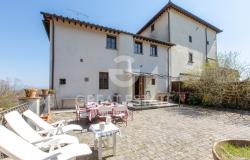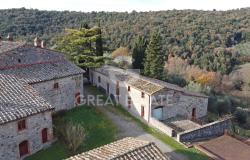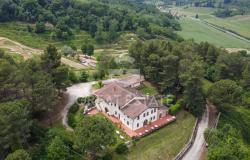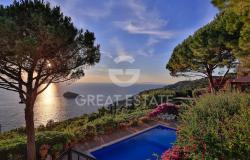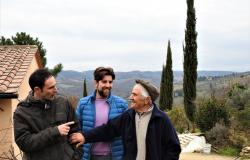Viareggio’s Carnival started in a coffee house. Back in 1873, the young scions of some of the city’s best families met around the coffee tables of the local casino, and decided that it would be great fun to have a Carnival parade along Viareggio’s seaside avenues. The event, they agreed, would feature huge wooden and plaster floats sculpted by artists and built by expert carpenters and smith. The idea took off and survived both World Wars and the 1960 fire that destroyed the warehouses where the floats were built.
Over time, wood and plaster were replaced by papier mâché, which, being lighter, allowed for bigger and better masks to be sculpted. The Viareggio Carnival acquired songs, traditional characters and even an official painter, Uberto Bonetti, who in 1931 invented the festival’s most famous mask, Burlamacco, a clown whose clothes are a jigsaw of those from the classic characters of the Italian Commedia dell’Arte. Today, the Viareggio Carnival spans one month of revels, street parties and masquerade balls—but most of all, it has the best float parades in Italy.
 The floats are perfect in every details and jaw-droppingly huge—up to 15m long, 10m wide and 30m high (think seven elephants stacked on top of one another). They are so heavy that only one company in Italy is able to supply the wheeled platforms to support them—the same one that also provides NASA with the vehicles to move the Space Shuttle when on the ground.
The floats are perfect in every details and jaw-droppingly huge—up to 15m long, 10m wide and 30m high (think seven elephants stacked on top of one another). They are so heavy that only one company in Italy is able to supply the wheeled platforms to support them—the same one that also provides NASA with the vehicles to move the Space Shuttle when on the ground.
The giant figures make slow progress along Viareggio’s panoramic Passeggiata. There is Burlamacco of course, Commedia dell’Arte characters such as Arlecchino or Pierrot, but also knights, haunted castles and the inevitable politicians, with Prime Minister Silvio Berlusconi and his greatest opponents among the most popular subjects.
The parades take place on the three Sundays preceding Shrove Tuesday, on Shrove Tuesday, and on the Sunday immediately afterwards—which is technically Lent but why waste an opportunity to party?
And for those who would like to celebrate Carnival all year round, there is the Citadel, a purpose-built complex which houses the Carnival museum, the workshops where the great papier mâché figures are build, and a papier mâché school.

